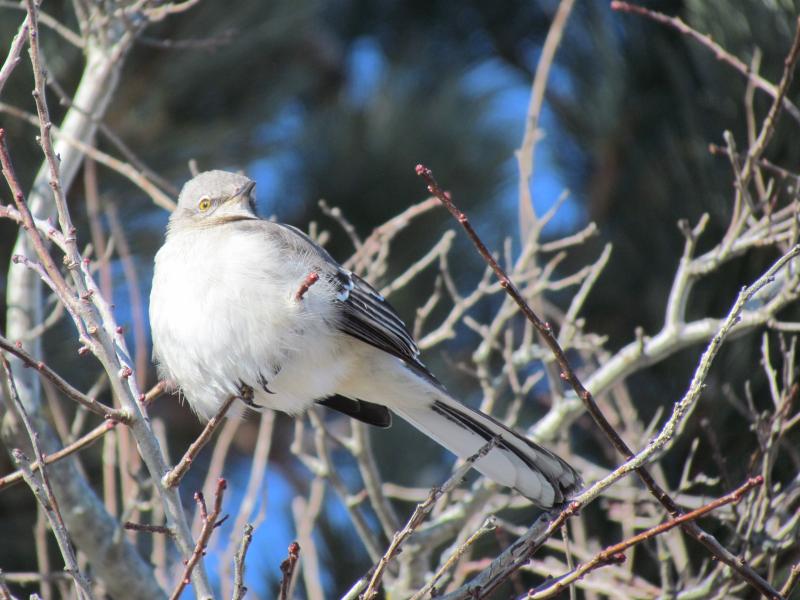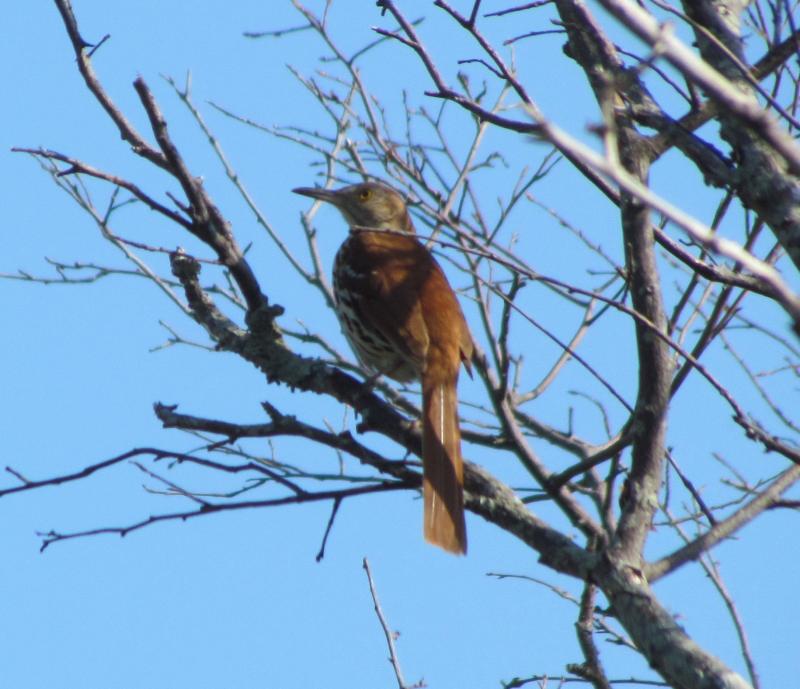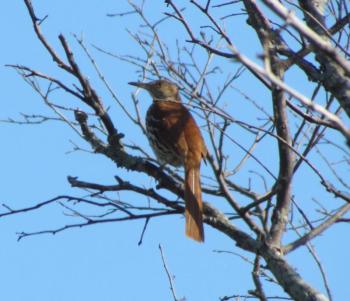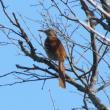Listen to the Mockingbirds
Certain bird species come and go in our neighborhood. This includes mockingbirds—northern mockingbirds to be exact, since there are another 13 species of mockingbird found south of the U.S. We see a mockingbird in or near our yard just about every year. But they’ve never stayed and set up territory. That means that we don’t get to experience, on a daily basis, what makes northern mockingbird so famous: their ability to mimic.
We were reminded of this recently when a local birder posted his recording of a mockingbird singing from a Portland location at midnight. In the recording, you can hear the bird imitate perhaps as many as 14 or 15 other bird species. This particular bird must have either spent a lot of time around robins and blue jays or just liked the sounds they produced because it had examples of multiple different vocalizations of those two species.
While both male and female mockingbirds sing, males are the ones you’re likely to hear singing most vigorously in spring and summer. Females are thought to choose the males with which they will pair based, at least partly, on numerous aspects of their vocal performance. This seems to include how they incorporate various sounds into their repertoire. As mockingbirds birds mature, they add more and more sounds into their playbook.
Like many people, we have had the wondrous experience of listening to the talented mimicry of mockingbirds both in Maine and across the U.S. A few years ago, we recorded one that we were particularly impressed with that held sway in the cemetery beside the Augusta airport. That bird cycled through one impression after another in rapid succession. In addition to many bird species, it even included sounds of sirens and car alarms!
One of the species it imitated was the whip-poor-will. We have never heard whip-poor-wills in that area, and there are no eBird records of whip-poor-wills from that spot. Do whip-poor-wills occur there regularly but have gone undetected by birders? Or did this bird pick up this song from somewhere, else even though we think of mockingbirds as non-migratory?
Interestingly, a brown thrasher was singing near this particular mockingbird and eventually flew up and took over the perch where the mockingbird had been singing. Brown thrashers are closely related to mockingbirds and are also excellent mimics. Unlike northern mockingbirds, brown thrashers do migrate, spending winters in the southern U.S. Is it possible that the brown thrasher heard whip-poor-wills singing when it was down south and brought that imitation back to use on its breeding grounds in Maine? Further, could the mockingbird neighbor have picked up the whip-poor-will imitation from the thrasher, rather than from an actual whip-poor-will?
There are so many fascinating questions about the songs of mockingbirds, thrashers, and other mimics. How do they decide which sounds to learn and incorporate into a song? How do they decide which sounds to juxtapose or repeat? The process seems similar to how a songwriter or an improvising musician decides what musical motif to play, the sequence of repeated motifs, which motifs sound best or most interesting when followed by another. Is each individual singing mockingbird essentially engaging in what we would consider an art performance if the bird were a human? Who knows, maybe the repetition of sounds like this is what started the human march to language!
Jeffrey V. Wells, Ph.D., is a Fellow of the Cornell Lab of Ornithology and Vice President of Boreal Conservation for National Audubon. Dr. Wells is one of the nation's leading bird experts and conservation biologists. He is a coauthor of the seminal “Birds of Maine” book and author of the “Birder’s Conservation Handbook.” His grandfather, the late John Chase, was a columnist for the Boothbay Register for many years. Allison Childs Wells, formerly of the Cornell Lab of Ornithology, is a senior director at the Natural Resources Council of Maine, a nonprofit membership organization working statewide to protect the nature of Maine. Both are widely published natural history writers and are the authors of the popular books, “Maine’s Favorite Birds” (Tilbury House) and “Birds of Aruba, Bonaire, and Curaçao: A Site and Field Guide,” (Cornell University Press).









































